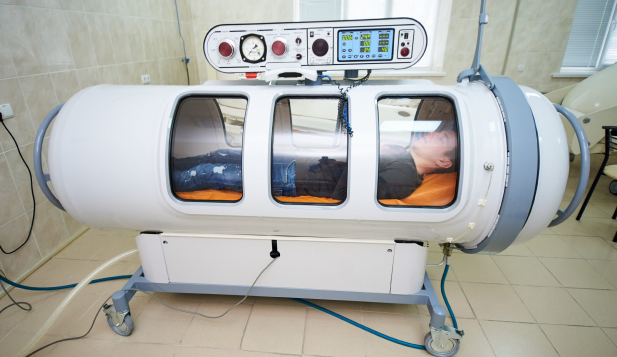Introduction
With growing popularity and media exposure, Hyperbaric Oxygen Therapy (HBOT) has attracted both excitement and skepticism. Unfortunately, this has spawned many myths, misconceptions, and overhyped claims. In this blog, we’ll separate fact from fiction — helping you better understand what HBOT is realistically capable of, and when caution is warranted.
Myth 1: HBOT Is a Cure-All
Reality: While HBOT has compelling uses, it is not a universal panacea.
Some centers promote HBOT for conditions like Alzheimer’s, autism, cancer, Lyme disease, etc. But most of these applications lack strong clinical evidence or regulatory approval. Harvard Health+2hyperbaricmedicalsolutions.com+2
Decisions should be based on evidence, not hype.
Myth 2: HBOT Is Inherently Dangerous
Reality: HBOT is generally safe when applied properly in medically supervised settings.
Risks exist (barotrauma, oxygen toxicity, vision changes), but serious complications are rare in accredited facilities. Cleveland Clinic+2Harvard Health+2
Many myths of danger stem from unregulated or low-quality operations using cheap equipment or poor safety practices.
Myth 3: More Oxygen / Higher Pressure = Always Better
Reality: There’s an optimal therapeutic window.
Too high pressures or overly prolonged oxygen exposure can cause oxygen toxicity or other complications. arXiv+2PMC+2
Protocols must balance efficacy with safety; customization is key.
Myth 4: Home / Portable Chambers Are Just as Good
Reality: While portable or “mild” hyperbaric devices exist, they cannot replicate the pressures, safety controls, and medical oversight of professional chambers.
They often operate at lower pressures, may lack rigorous monitoring, and have more limited evidence backing their use.
Premium centers like Innovative HBOT invest in certified chambers, safety systems, and medical staff — a combination that cannot be matched by consumer devices.
Myth 5: HBOT Is Only for Wounds & Injuries
Reality: While wound healing is a major application, HBOT’s physiological effects have spurred exploration in other areas — neurological recovery, post-viral syndromes, aging, etc. hyperbaricmedicalsolutions.com+3PMC+3PMC+3
However, most of these newer uses are still in research phases; they are not universally accepted or approved yet.
Evidence-Based Clarity: What We Do Know
- HBOT is effective for several approved indications (nonhealing wounds, radiation injury, decompression sickness, carbon monoxide poisoning, etc.) Harvard Health+2PMC+2
- The benefits are best realized when HBOT is part of a comprehensive care plan, not a standalone “miracle fix.”
- Patient selection, timing, and treatment protocols make a major difference.
- Safety and oversight matter — quality of facility, training, and maintenance are nonnegotiable.
Guidelines, Approvals & Limitations
Regulatory bodies (e.g. FDA, national health authorities) typically approve or endorse HBOT only for specific conditions. Off-label use is possible but must be informed, consented, and monitored.
Always verify:
- Is the center accredited by recognized hyperbaric societies?
- Do they follow established protocols and safety guidelines?
- Is there transparency about risks and expected benefits?
How to Discuss HBOT with Your Doctor / Provider
- Ask for peer-reviewed evidence for your specific condition
- Request details of the treatment protocol (pressure, duration, number of sessions)
- Ask about safety precautions, contraindication screening, emergency systems
- Ask about cost, insurance coverage or payment plans
- Seek a second opinion if claims sound too good to be true
At Innovative HBOT, we believe in informed decision-making. We provide prospective patients with the research, risk disclosures, and realistic outcome expectations before any commitment.

